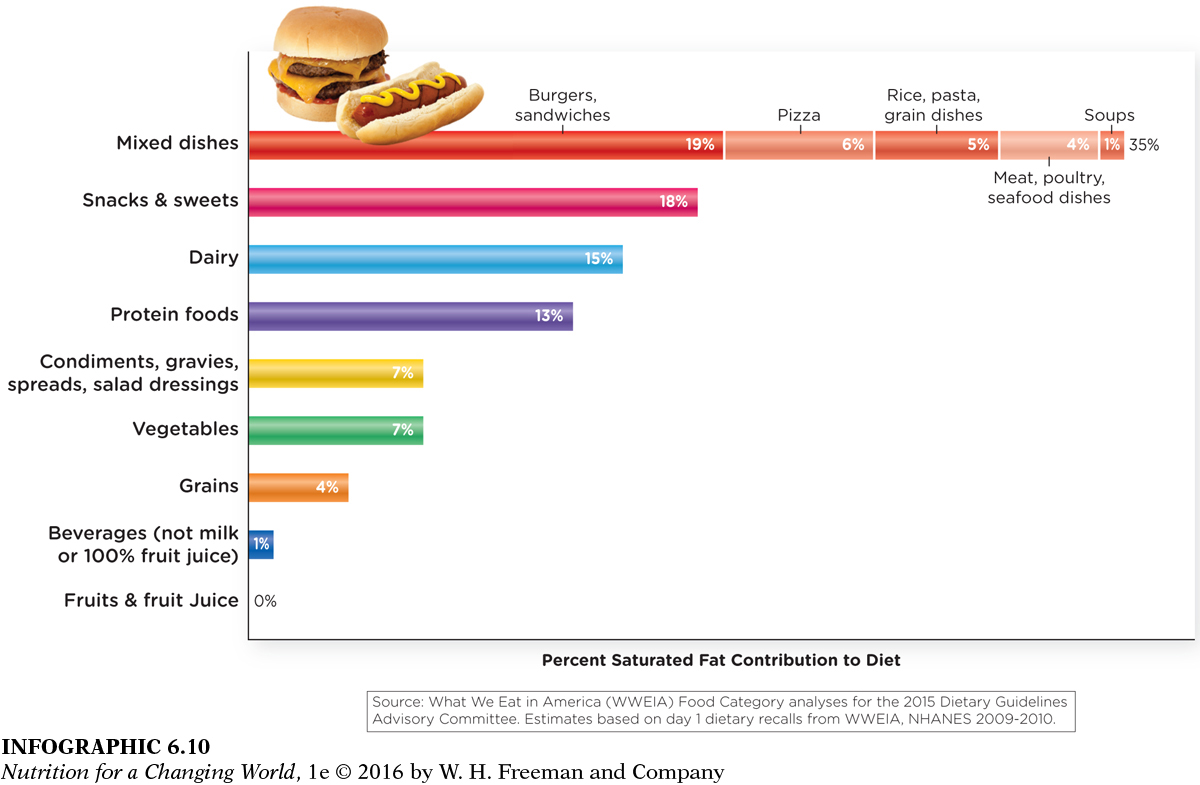CURRENT FAT INTAKE AND RECOMMENDATIONS
Our understanding of the role of fat in the diet is constantly changing. The dietary recommendations for fat intake have changed over the years as new scientific evidence and population studies are released and research continues to evolve.
This makes it difficult for the average consumer to know what to think about dietary fat, says Susan Allport, author of The Queen of Fats, about the discovery of the benefits of omega-
Since the early 1970s, Americans have eaten more low-
To promote health and reduce the risk of chronic disease, the Acceptable Macronutrient Distribution Range (AMDR) for total fat has been set at 20% to 35% of our total calories. Most of that should come from unsaturated fats; we should eat as little saturated fat and trans fat as possible. (Infographic 6.10)

Chapter 7 further describes current dietary recommendations and strategies to promote health and reduce the risk of heart disease.
“We can overconsume fat, but it’s not the evil thing we once thought it was, as long as we make sure to emphasize essential fatty acids, particularly omega-
FAT SUBSTITUTE additive that replaces fat in foods; contains fewer or no calories, but has a similar texture and produces similar sensation in mouth
Some people who want to reduce their fat intake turn to fat substitutes, which imitate the taste, texture, and cooking properties of fats but provide fewer calories. Use of these products in place of their higher-
Fat substitutes from carbohydrates, protein, and vegetable oils are considered safe; those from other substances must be tested for safety. One common substitute is Olestra, which has chemical components similar to those of triglycerides in a different configuration, causing them to not be digested or absorbed by the body. But there are consequences: The U.S. Food and Drug Administration requires any products that contain Olestra to read: “Olestra may cause abdominal cramping and loose stools. Olestra inhibits the absorption of some vitamins and other nutrients.”
■ ■ ■
In general, most people are aware that there is a link between dietary fat and disease, primarily obesity and heart disease. However, the majority are confused about, or lack an awareness of, the types of fat—
This was even truer in the 1970s, when Dyerberg and Bang were struggling to find out whether DHA and EPA offered specific protections against heart disease and other conditions that aren’t offered by other fats, even other polyunsaturated fats. When their technician, Aase Brøndum Nielsen, collected blood samples from the Inuit, she found it took the Inuit twice as long as the Danish adults to stop bleeding after the needle was removed. The Inuit also had a reputation for frequent nosebleeds. Something about their blood was different.
Around that time, a group of scientists discovered compounds derived from long-